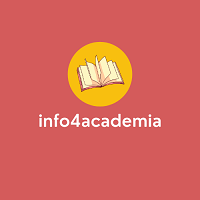Software Development For Optimal Portfolio Selection Using The Markowitz Method
Abstract
Investors could invest their funds in a collection of financial assets (portfolio). The optimal combination of the portfolio will optimize the return. The purpose of this research is to develop software that supports investment decisions using the model of Markowitz. The method used in developing this software is the System Development Life Cycle method, where in this method there are three stages of system development, namely the Definition Stage, the Construction Stage, and the Implementation Stage. The result of this development is software that can be used to determine the optimal portfolio. The software will support the decision-making of the investment. The output of this research is software, that is validated by expert judgment.
Keywords
Full Text:
PDFReferences
Aghni, R. I. (2018). Functions and types of learning media in accounting learning. Jurnal Pendidikan Akuntansi Indonesia, 16(1). 98-107. doi:10.21831/jpai.v16i1.20173
Bodnar, G. H., & Hopwood, W. S. (2001). Accounting information systems (Vol. 8). London: Prentice Hall.
Daryanto. (2013). Media Pembelajaran. Yogyakarta: Gava Media
Hartono, J. (2014). Teori dan Praktik Portofolio dengan Excel. Surabaya: Salemba Empat.
Jensen, M. C. (1968). The performance of mutual funds in the period 1945-1964. The Journal of finance, 23(2), 389-416. doi:10.2307/2325404
Kemp, J. E., Dayton., & Diane K. (1985). Planning & Producing Instructional Media Fifth Edition. New York: Harper & Row Publisher
Le, T., & Platen, E. (2006). Approximating the growth optimal portfolio with a diversified world stock index. The Journal of Risk Finance, 7(5), 559-574. doi:10.1108/15265940610716115
Martin, E. W., Brown, C. V., DeHayes, D. W., Hoffer, J. A., & Perkins, W. C. (2005). Managing information technology.
McLeod, R. (1995). Management Information Systems, Simon & Schuster (Asia) Pte,LTd.
Novana, T., & Sukaesih, S. (2012). Pengembangan multimedia interaktif berbahasa inggris materi vertebrata sebagai suplemen pembelajarandi SMA. Journal of Biology Education, 1(1), 40-46. doi:10.15294/jbe.v1i1.381
Sharpe, W. F. (1965). Risk-aversion in the stock market: Some empirical evidence. The Journal of Finance, 20(3), 416-422. doi:10.2307/2977991
Sudjana, N. (2005). Media pengajaran (Penggunaan dan Pembuatannya). Bandung: Percetakan Sinar Baru Algensindo Offset.
Sugeng, B. (2017). Manajemen Keuangan Fundamental. Yogyakarta: Deepublish.
Susanto, S., Dewi, N. R., & Irsadi, A. (2013). Pengembangan multimedia interaktif dengan education game pada pembelajaran IPA terpadu tema cahaya untuk siswa SMP/MTs. Unnes Science Education Journal, 2(1), 230-238. doi:10.15294/usej.v2i1.1829
Tandelilin, E. (2010). Portofolio dan Investasi. Yogyakarta: Kanisius.
Teoh, K. B., Pérez-Restrepo, C., López, C. A., Thulasedass, S., Chetana, S., Singh, P., ... & Das, A. (2021). A Study on Investors’ Perceptions towards Stock Market. International Journal of Accounting & Finance in Asia Pasific (IJAFAP), 4(3), 60-74. doi:10.32535/ijafap.v4i3.1206
Treynor, J., & Mazuy, K. (1966). Can mutual funds outguess the market. Harvard business review, 44(4), 131-136.
DOI: https://doi.org/10.32535/ijafap.v6i1.1524
Refbacks
- There are currently no refbacks.
Copyright (c) 2023 Nurika Restuningdiah, Makaryanawati Makaryanawati, Aulia Azzardina

This work is licensed under a Creative Commons Attribution-NonCommercial-ShareAlike 4.0 International License.
International Journal of Accounting and Finance in Asia Pacific (IJAFAP)
ISSN 2684-9763 (Print) | ISSN 2655-6502 (Online)
DOI Prefix: 10.32535 by CrossRef
Published by AIBPM Publisher
JL. Kahuripan No. 9, Hotel Sahid Montana, Malang, Indonesia
Email: adm.ijafap@gmail.com
Phone: +62 341 366222
Website: https://ejournal.aibpmjournals.com/index.php/IJAFAP
Governed by
Association of International Business and Professional Management
Email: admin@aibpm.org
Website: https://www.aibpm.org/
Licensing Information

International Journal of Accounting and Finance in Asia Pacific (IJAFAP) is licensed under a Creative Commons Attribution-NonCommercial-ShareAlike 4.0 International License.
















